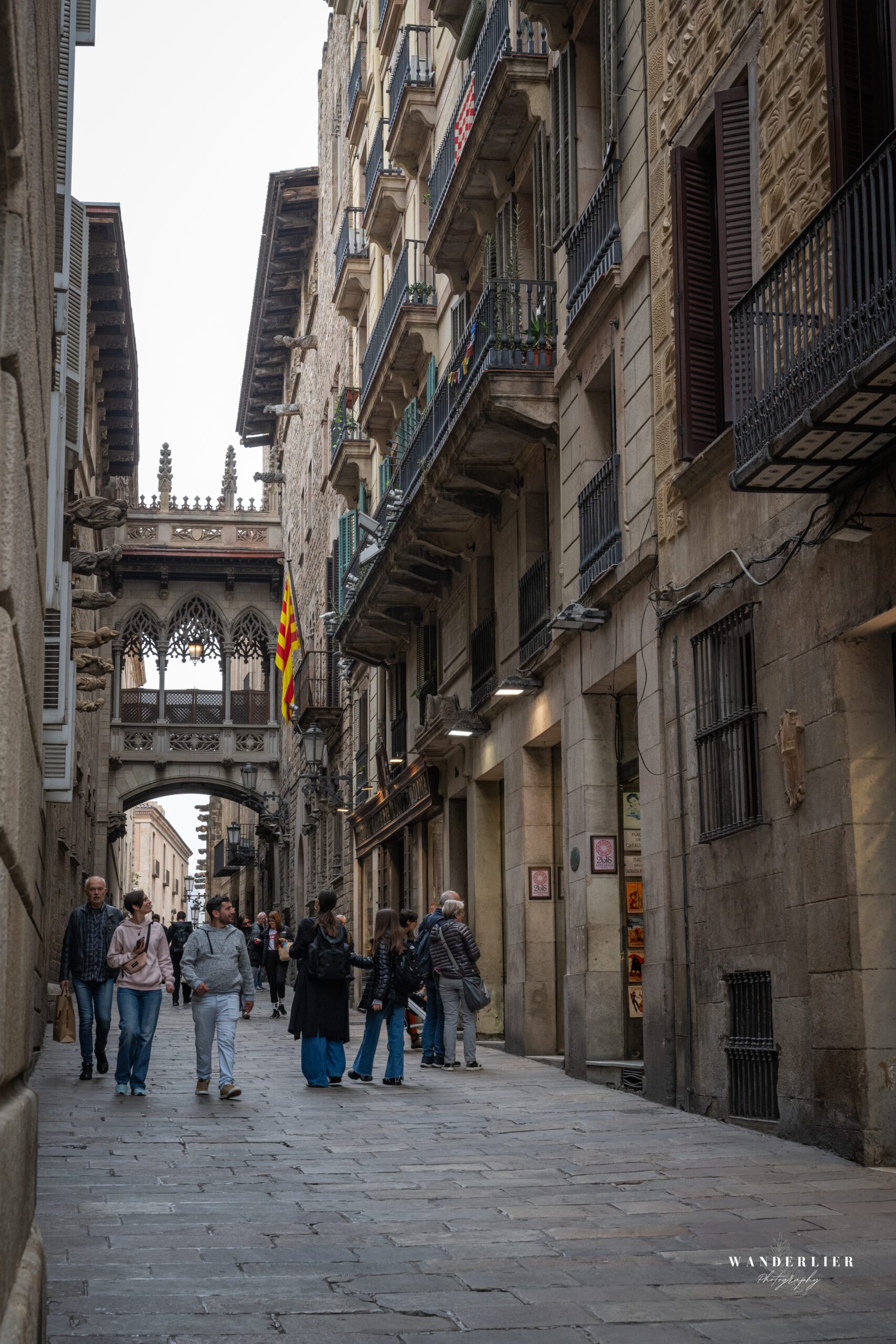La Sagrada Familia
The Sagrada Família, located in Barcelona, is one of the most extraordinary architectural marvels in the world. Designed by the iconic Antoni Gaudí, this basilica blends Gothic elements with the innovative Art Nouveau style. Its construction began in 1882 under a different architect, but Gaudí took over in 1883, changing the project entirely. Even today, the Sagrada Família remains under construction, making it one of the longest-running architectural endeavors in history.
One of its standout features is its towering spires, which are visible from almost any part of Barcelona. Each spire is crowned with unique decorative elements, symbolizing key aspects of Christian theology. Additionally, the basilica’s three facades represent significant moments in Christ’s life: the Nativity, the Passion, and the Glory. While the Nativity facade is vibrant and detailed, the Passion facade is stark and minimalist, reflecting the somber themes of Christ’s suffering.
Upon entering, visitors are often stunned by the interior’s design. Gaudí envisioned it as a “forest of light,” with columns resembling trees that branch out to support the ceiling. Furthermore, the stained glass windows cast mesmerizing patterns of colored light throughout the space. This interplay of natural forms and light creates a serene and otherworldly atmosphere.
In recent years, technological advancements have accelerated the basilica’s construction. For instance, modern software helps architects follow Gaudí’s complex and detailed blueprints. Despite these advancements, the project maintains its commitment to Gaudí’s original vision. As a result, every element of the basilica is carefully crafted to reflect his unique style.
Today, the Sagrada Família is a UNESCO World Heritage Site and a global symbol of Barcelona. Millions of visitors flock here annually to witness its grandeur. Without a doubt, it remains one of the most iconic landmarks in the world.
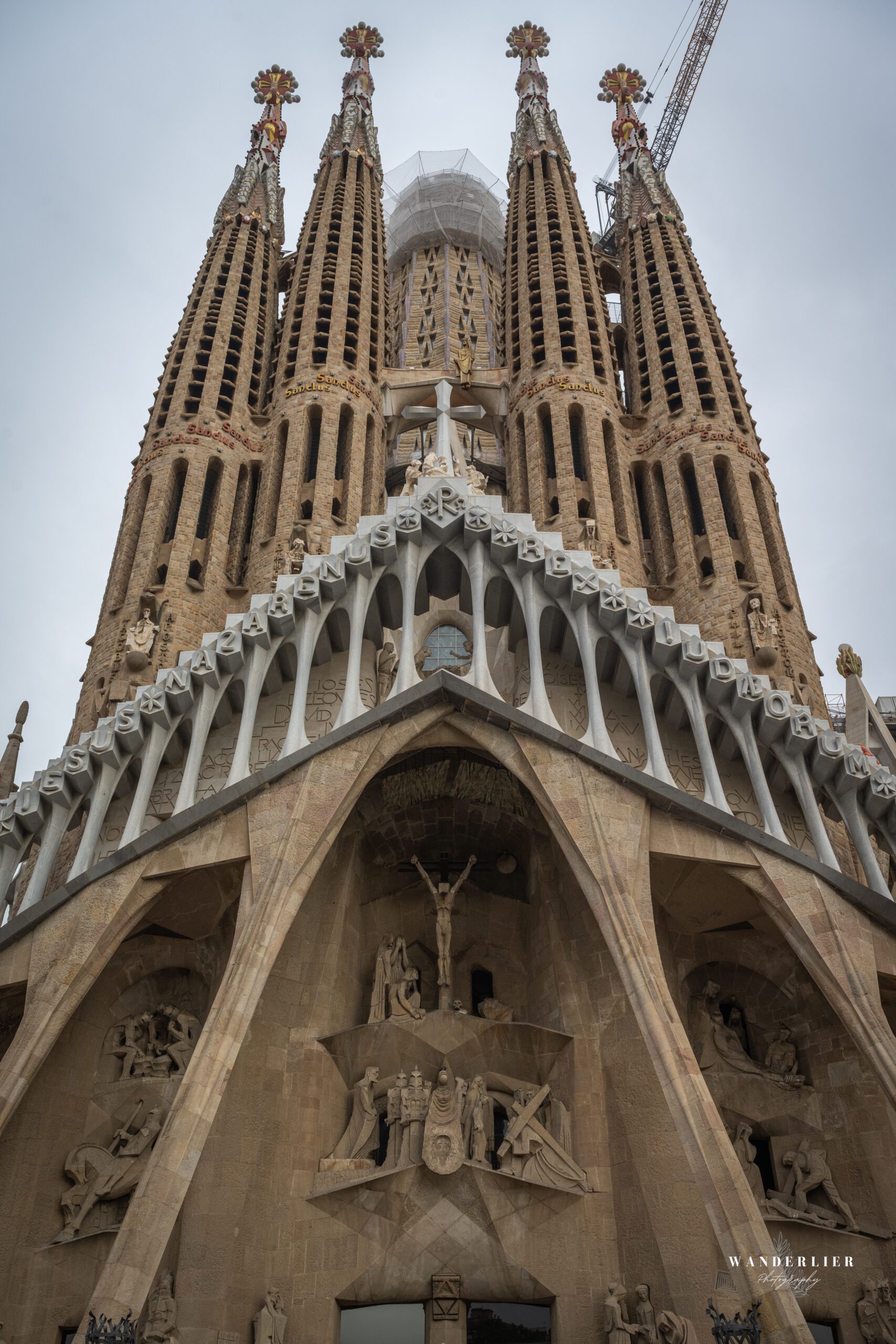
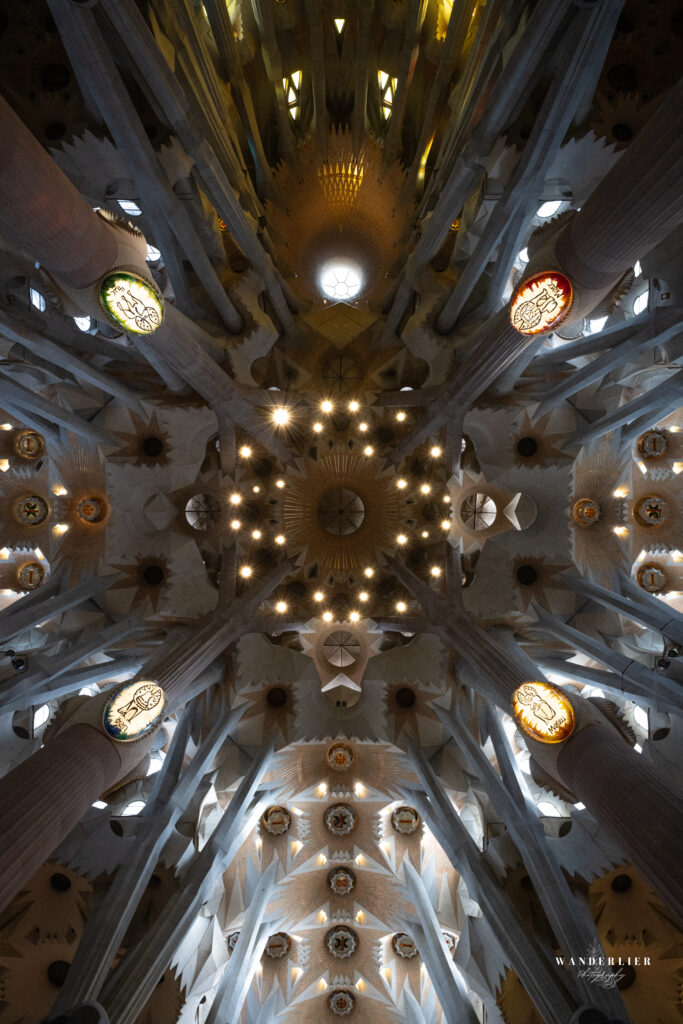
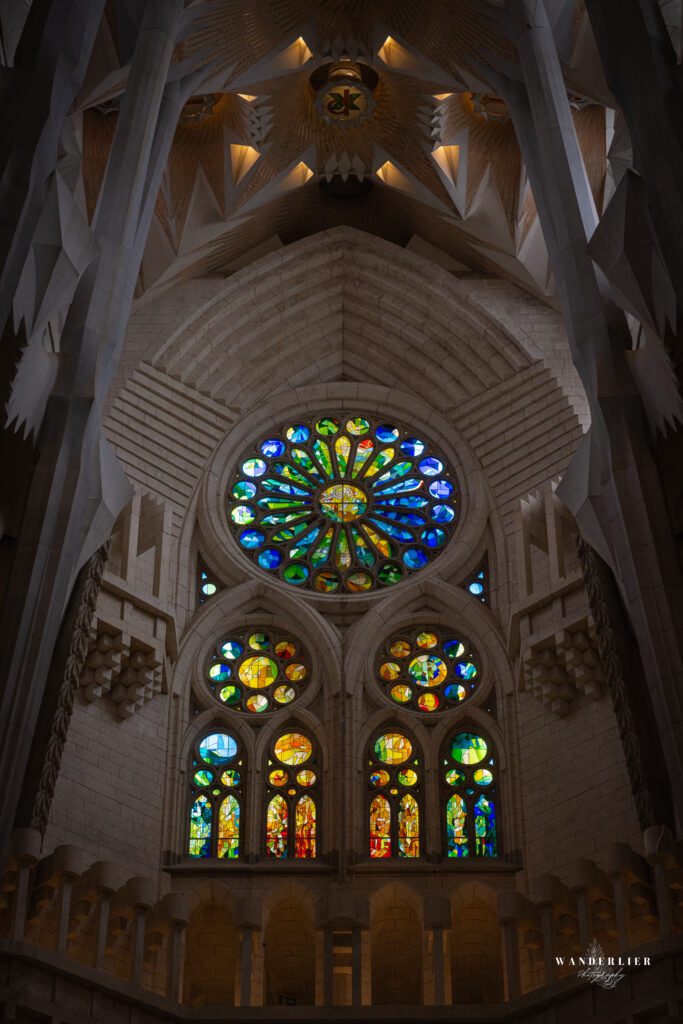
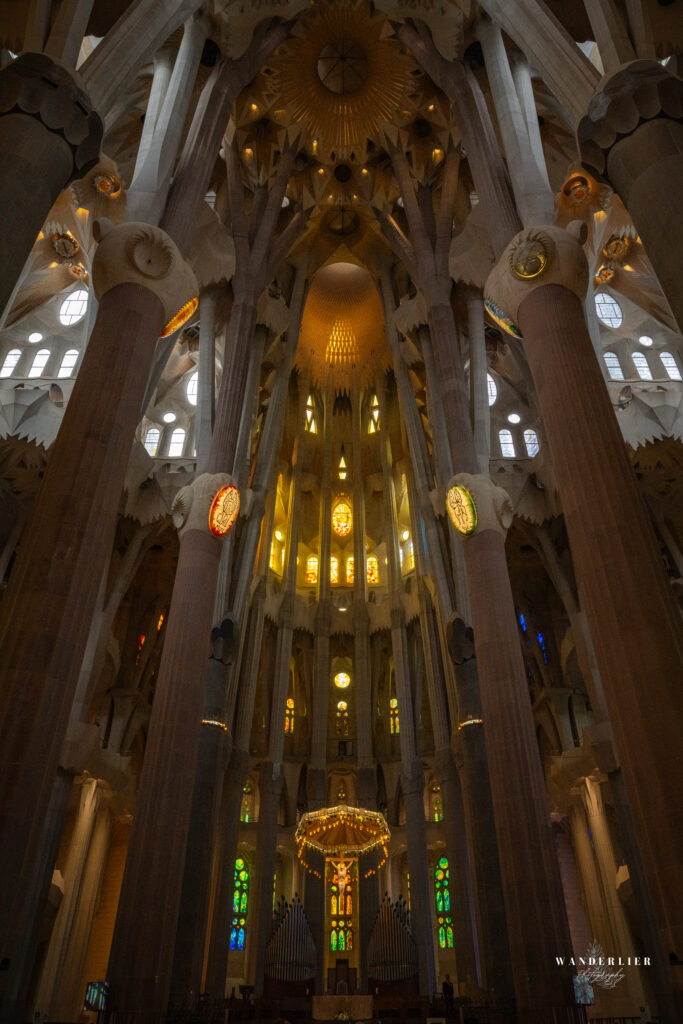
Park Güell
Park Güell, located in Barcelona, Spain, is one of the most iconic works of architect Antoni Gaudí. Originally designed as a residential complex, it was transformed into a public park in 1926. Today, it stands as a UNESCO World Heritage Site and a symbol of Catalan modernism.
The park’s vibrant mosaic tiles immediately catch the eye of visitors. Gaudí’s creative genius is evident in the colorful bench that curves around the central terrace. Furthermore, the terrace provides breathtaking views of the city, including the Sagrada Familia and the Mediterranean Sea. As a result, it’s a favorite spot for tourists and photographers alike.
In addition to its vibrant colors, Park Güell is known for its unique architectural features. The main entrance is adorned with two whimsical pavilions, resembling something from a fairy tale. Nearby, the iconic dragon sculpture, “El Drac,” welcomes visitors with its dazzling tilework. Besides being a decorative piece, it also functions as part of the park’s water drainage system.
Walking further, visitors can explore the Hypostyle Hall, an area supported by 86 Doric columns. Interestingly, this space was originally intended to serve as a marketplace. Above it lies the large open plaza, known as the Greek Theatre, surrounded by the serpentine bench. Moreover, the park’s design incorporates natural elements, blending seamlessly with its surroundings.
What sets Park Güell apart is its ability to connect art and nature. Gaudí drew inspiration from organic forms, creating structures that feel alive. Additionally, the winding pathways and lush gardens invite visitors to relax and explore at their own pace.

Arc de Triomf
The Arc de Triomf, located in Barcelona, Spain, is a monumental gateway with rich historical and cultural significance. Designed by architect Josep Vilaseca, it was built in 1888 for the Universal Exposition. Unlike traditional triumphal arches that commemorate military victories, this one symbolizes progress and welcome.
Made of reddish brick, the Arc de Triomf showcases Neo-Mudéjar style, inspired by Islamic architecture. This unique design sets it apart from other European triumphal arches. Furthermore, the intricate carvings and detailed sculptures add to its aesthetic appeal. For instance, the front frieze by Josep Reynés represents the granting of awards to exposition participants.
Walking closer, visitors notice the emblem of Barcelona at the top of the arch. Additionally, the words “Barcelona rep les nacions” (Barcelona welcomes the nations) highlight its international significance. On the opposite side, a frieze by Josep Llimona depicts the city’s economic and cultural strength. These elements reflect Barcelona’s ambitions during the late 19th century.
The Arc de Triomf serves as the gateway to Passeig de Lluís Companys, a wide pedestrian boulevard. This tree-lined avenue is perfect for leisurely strolls or relaxing in the nearby Ciutadella Park. Moreover, the area often hosts cultural events and street performances, making it vibrant and lively.
Its central location makes the Arc de Triomf easily accessible from various parts of the city. Visitors often use it as a starting point to explore the historic El Born district. Besides being a tourist attraction, it remains a beloved landmark for Barcelona residents.
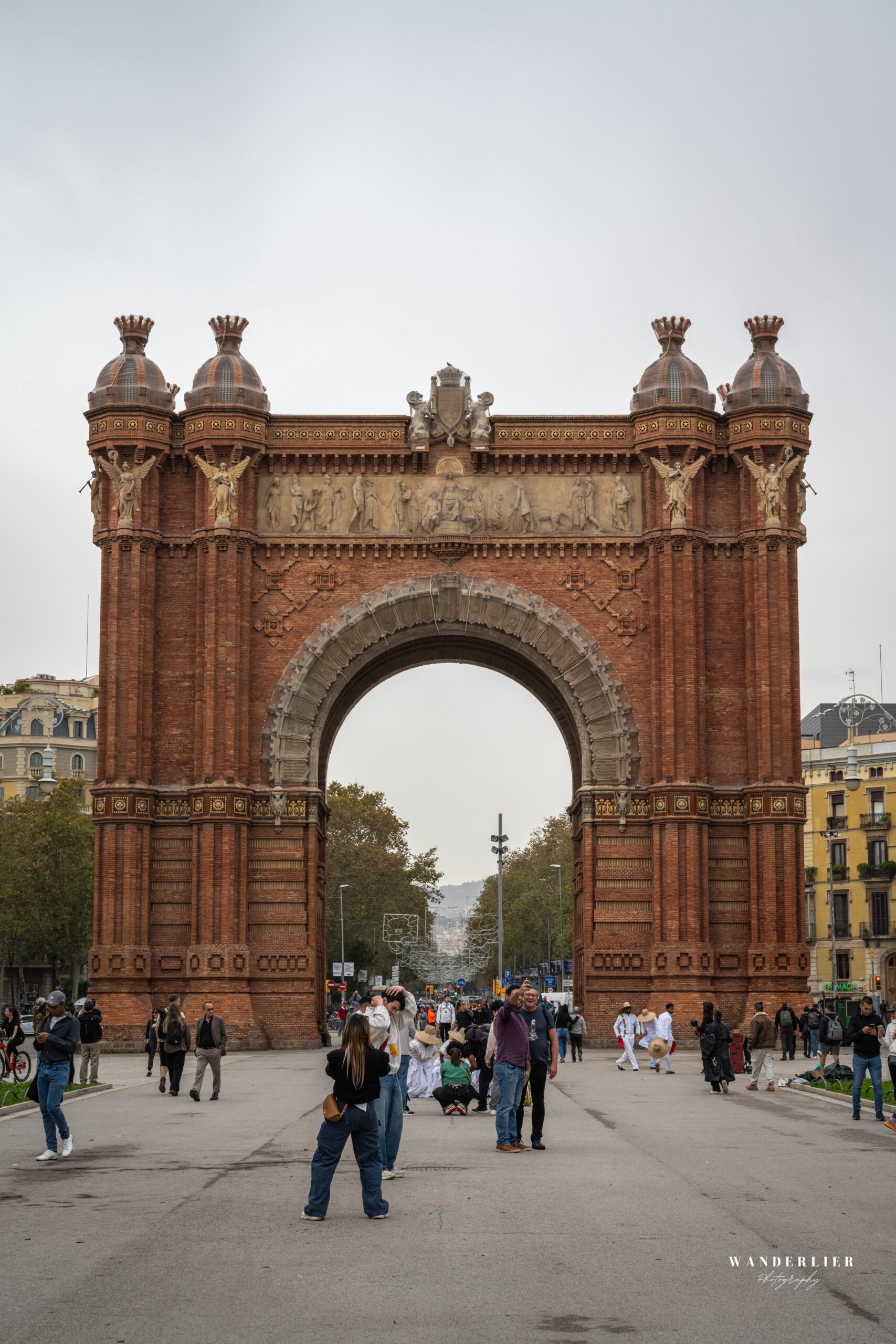
Recinte Modernista de Sant Pau
The Recinte Modernista de Sant Pau in Barcelona is a stunning architectural masterpiece and a UNESCO World Heritage Site. Designed by Lluís Domènech i Montaner, it was originally built as a hospital complex. Completed in 1930, it is a prime example of Catalan Modernism, combining functionality with artistic beauty.
Firstly, the complex served as the Hospital de la Santa Creu i Sant Pau for nearly a century. It provided medical care to the city’s residents and was admired for its innovative design. Today, it functions as a cultural and historical site, hosting exhibitions and events. Consequently, visitors can explore its rich history and architectural significance.
The site consists of 12 pavilions interconnected by underground passageways. Each building features intricate mosaics, colorful tiles, and stunning stained glass windows. Furthermore, the lush gardens surrounding the complex offer a peaceful retreat from the city’s hustle and bustle. These elements reflect Domènech i Montaner’s vision of combining health care with nature and art.
Walking through the site, visitors notice details inspired by Catalan traditions and medieval architecture. For instance, the use of curved lines and organic motifs adds to its aesthetic charm. Additionally, sculptures and carvings throughout the buildings symbolize hope, healing, and renewal.
The Recinte Modernista is easily accessible from the Sagrada Família, just a short walk away. This proximity makes it a convenient stop for tourists exploring Barcelona’s Modernist landmarks. Moreover, guided tours provide insights into the architecture and historical significance of the site.
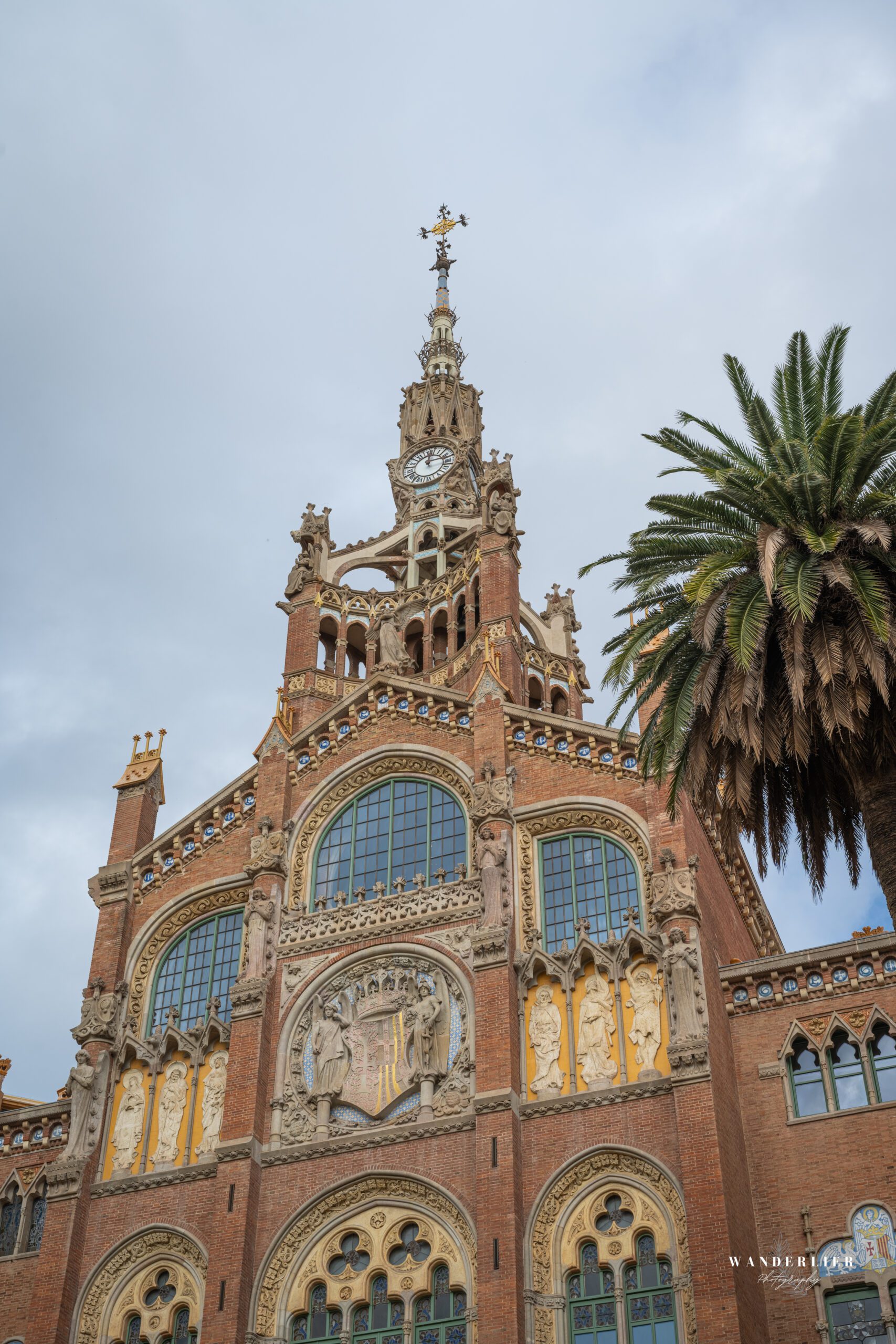
Recinte Modernista de Sant Pau
The Recinte Modernista de Sant Pau in Barcelona is a stunning architectural masterpiece and a UNESCO World Heritage Site. Designed by Lluís Domènech i Montaner, it was originally built as a hospital complex. Completed in 1930, it is a prime example of Catalan Modernism, combining functionality with artistic beauty.
Firstly, the complex served as the Hospital de la Santa Creu i Sant Pau for nearly a century. It provided medical care to the city’s residents and was admired for its innovative design. Today, it functions as a cultural and historical site, hosting exhibitions and events. Consequently, visitors can explore its rich history and architectural significance.
The site consists of 12 pavilions interconnected by underground passageways. Each building features intricate mosaics, colorful tiles, and stunning stained glass windows. Furthermore, the lush gardens surrounding the complex offer a peaceful retreat from the city’s hustle and bustle. These elements reflect Domènech i Montaner’s vision of combining health care with nature and art.
Walking through the site, visitors notice details inspired by Catalan traditions and medieval architecture. For instance, the use of curved lines and organic motifs adds to its aesthetic charm. Additionally, sculptures and carvings throughout the buildings symbolize hope, healing, and renewal.
The Recinte Modernista is easily accessible from the Sagrada Família, just a short walk away. This proximity makes it a convenient stop for tourists exploring Barcelona’s Modernist landmarks. Moreover, guided tours provide insights into the architecture and historical significance of the site.



The Museu Nacional d’Art de Catalunya
The Museu Nacional d’Art de Catalunya (MNAC) is one of the most significant cultural institutions in Barcelona. Located on Montjuïc Hill, it offers an extensive collection of Catalan art. The museum’s history dates back to 1934 when it was established to showcase the region’s rich artistic heritage.
First, the museum is housed in the impressive Palau Nacional, a grand building that was constructed for the 1929 International Exposition. This architectural masterpiece itself draws many visitors, with its grand façade and spectacular views of the city. Additionally, the museum’s location on Montjuïc Hill provides an excellent vantage point of Barcelona.
Inside, the MNAC offers a wide range of art from different periods. One of the most notable collections is its Romanesque art, which includes murals from Catalan churches. These works are famous for their vivid colors and detailed depictions of biblical scenes. The museum also has a remarkable collection of Gothic art, with pieces from the 13th to 15th centuries, showcasing religious themes and intricate craftsmanship.
Moving forward in time, the museum features an impressive collection of Renaissance and Baroque art. This collection includes works by prominent artists such as El Greco, Zurbarán, and Murillo. Moreover, the museum’s modern art collection is equally impressive, with notable works from artists like Picasso, Dalí, and Casas.
The MNAC also emphasizes its role in preserving and promoting Catalan art. Many of the works in its collection reflect the unique cultural and historical context of Catalonia. Visitors can explore the evolution of Catalan art through a series of well-curated exhibitions.
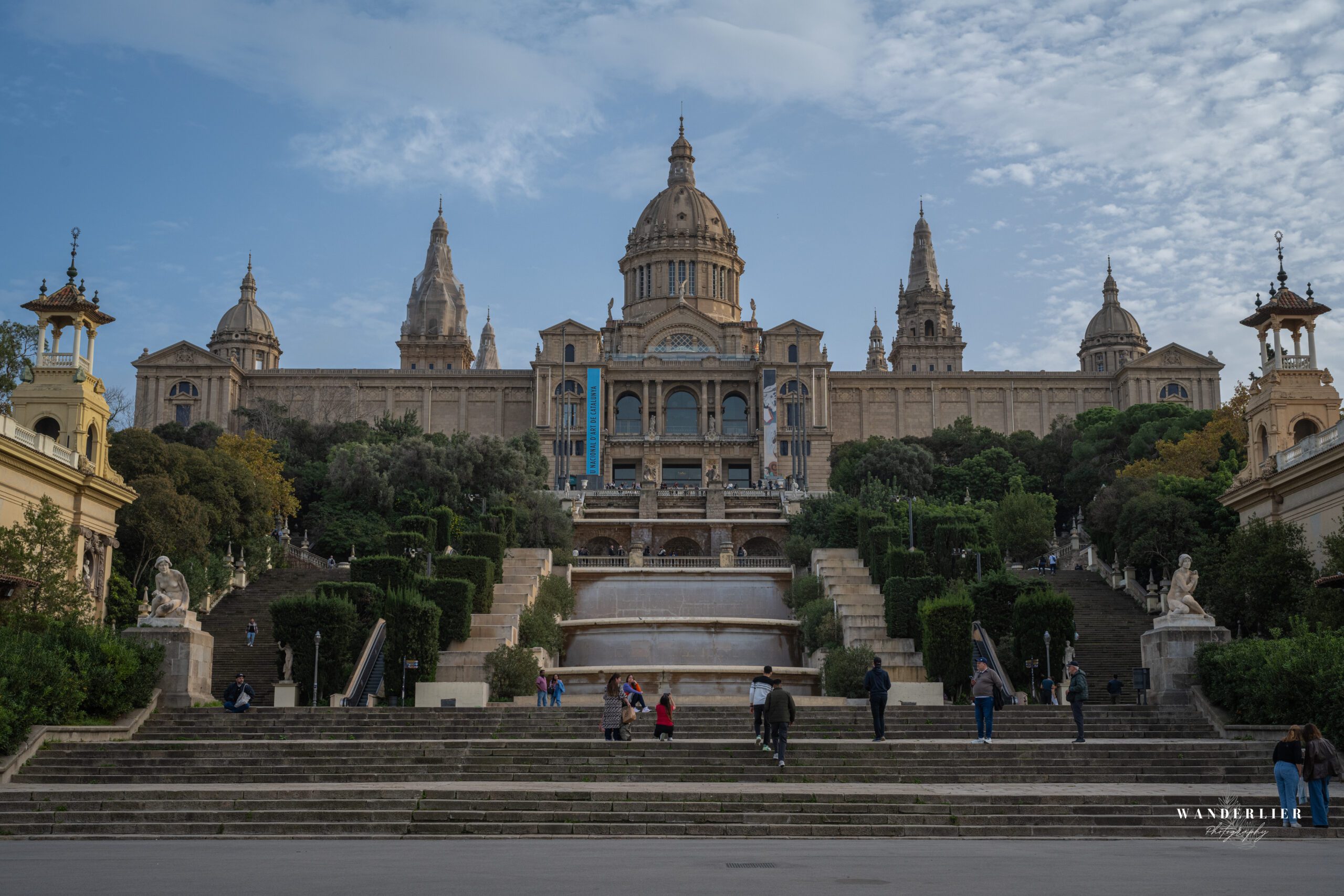

Parc de la Ciutadella
Parc de la Ciutadella is one of Barcelona’s most beloved green spaces. Located near the city center, it covers 70 acres. The park’s history dates back to the late 19th century. Initially, it was the site of a military citadel built in the 18th century. However, the citadel was demolished, and the park was created for the 1888 Universal Exposition.
First, the park is famous for its central monument, the Cascada Fountain. This impressive structure was designed by Josep Fontsére, with help from Antoni Gaudí. The fountain features a grand waterfall and a statue of Venus, making it a popular photo spot. Additionally, the park has a large lake, where visitors can rent rowboats. The serene water adds to the park’s peaceful atmosphere.
Moreover, Parc de la Ciutadella is home to the Barcelona Zoo. The zoo, which opened in 1892, houses a wide variety of animal species. It provides educational experiences and promotes animal conservation. Furthermore, the park features vast lawns perfect for picnics and outdoor activities. Many locals and tourists come to relax or enjoy sports.
In addition, the park is a hub for cultural and leisure activities. Various events, concerts, and festivals are often held within its grounds. Visitors can explore the park’s beautiful gardens, including the lush rose garden. The park’s layout encourages leisurely strolls, making it ideal for a quiet day out.
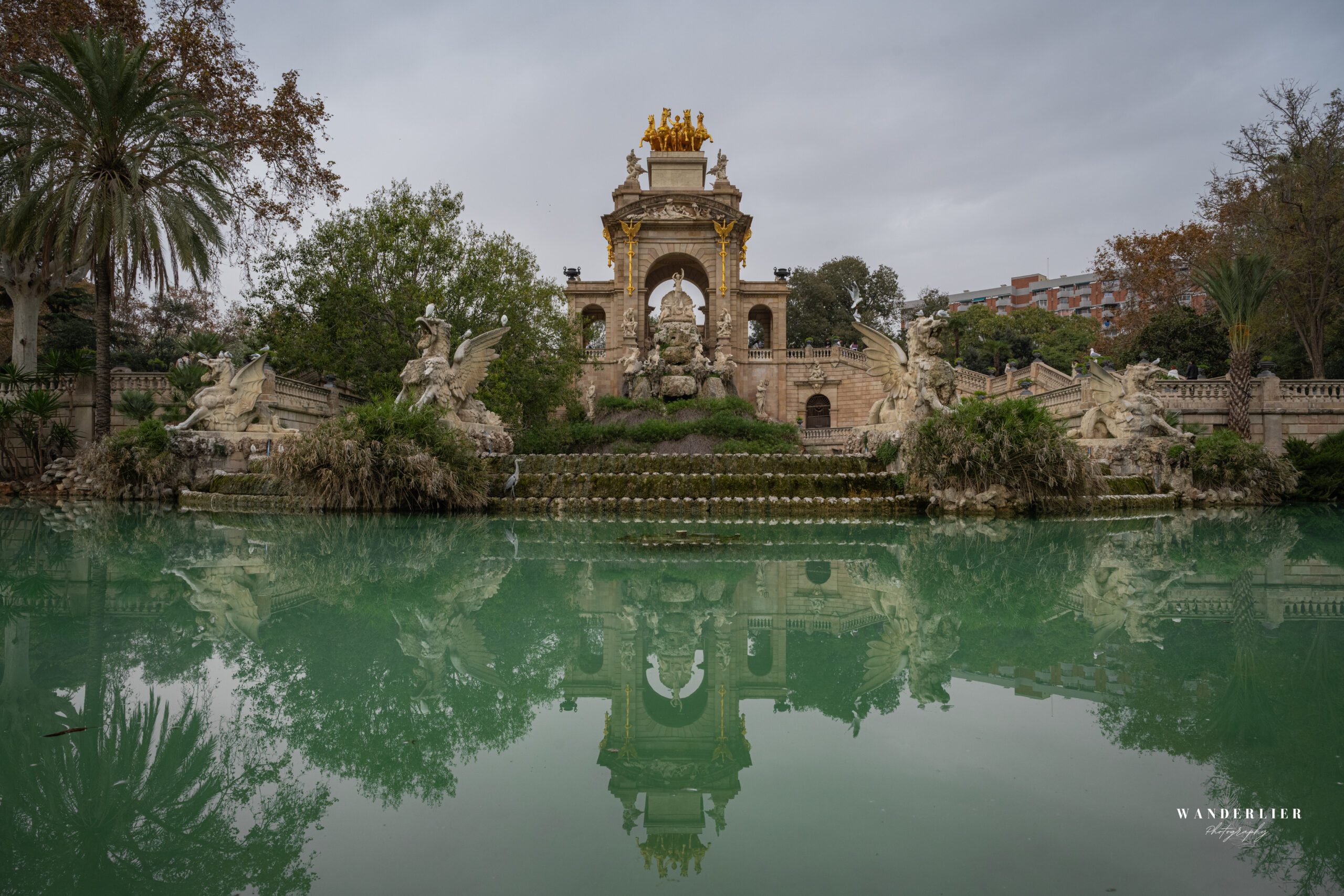

Barri Gòtic
Barri Gòtic, or the Gothic Quarter, is the heart of Barcelona’s historic center. This area is rich in history and charm. Located near La Rambla, it offers a maze of narrow streets and squares. The district’s origins date back to Roman times. However, it was in the medieval period that it took its current shape.
First, Barri Gòtic is known for its stunning architecture. Narrow alleys and stone buildings create an intimate, timeless atmosphere. The highlight is Barcelona Cathedral, a magnificent example of Gothic architecture. Visitors can explore its intricate facades and serene cloisters. Moreover, the quarter is home to several other historic buildings, such as the old Jewish quarter. These sites provide a glimpse into the city’s past.
In addition to the architecture, the Gothic Quarter has a vibrant cultural life. There are many shops, cafes, and restaurants offering local delicacies. The lively plazas are often filled with both locals and tourists, creating a bustling environment. Furthermore, the area has a thriving arts scene, with galleries and street performances throughout the streets.
The district also holds several important landmarks. For instance, Plaça del Rei is a historic square where medieval kings once lived. Nearby, the ancient Roman walls stand as a reminder of the city’s founding. Walking through the Barri Gòtic is like traveling back in time, with history and modern life blending seamlessly.
